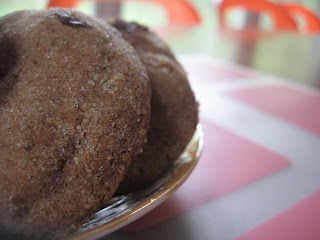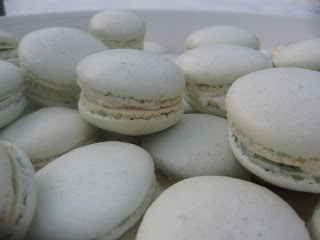I apologize for my lack of posts since May! It's been a crazy summer, but I have been baking quite a bit and plan to catch you guys up on some of the treats I've been making. Anyway, I was strolling through the Park Slope farmer's market (on 5th Ave. not Grand Army Plaza), when I came upon a carton of gooseberries.
I thought I had a myriad of recipes calling for this exotic fruit, so I brought my gooseberries home with the thrill and satisfaction of finally tackling some of my less accessible recipes. Suffice it to say, I could not find a single cookbook that called for gooseberries and so I turned to the internet in desperation.
After finding about 30 recipes for gooseberry fool, which involves a whipped cream suspension of gooseberries (undoubtedly delicious, but not what I was in the mood for), I found the BBC's recipe for Goosberry and Elderflower Frangipane Tart, which for some unearthly reason they have dubbed a petit four. Whatever fancy ass name you bequeath upon the pastries, they were amazing.
The frangipane is simply an almond custard that acts as a layer in tarts, however some of the recipients of my goods were allergic to almonds. After careful research on viable alternatives to almonds, I settled on pistachios, which ended up being a wonderful choice regardless of medical reasons.
For the pastry, I added 500 g of flour into a bowl with 100 g of confectioner's sugar, and needed this with 250 g of butter. Then I added some vanilla beans from my pod (add at your discretion, but be warned of their potency) and finally I added 2 eggs. Knead until you have a homogenous consistency. I rolled this into a ball and placed it in the fridge for 30 minutes.
For the jam, start by placing a metal or ceramic saucer in the freezer. This will help you determine if the jam has set while you're boiling it. Add a pad of butter to a pot and then add about 225 g of gooseberries (I had less) and 140 mL of water. I simmered this for 15 minutes and then lowered the heat and added 225 g of sugar. The sugar will dissolve and the gooseberries will get softer. After the sugar dissolves, boil the mixture while stirring for about 10 minutes. To make sure you're heading in the right direction, take a spoonful of jam and plop it on the plate in the freezer.
If you're doing it write, the jam will suddenly harden a bit and look like jam, if not, it will be loose and you must boil it further. Pour the jam into a bowl and add 1 tbs of elderflower cordial (purchased at any English specialty shop) and stir. You can place this in the fridge for a bit.
Your oven should be set to 350 F. You can roll the pastry out and place it in a buttered muffin or tart tins. Leave them in the fridge until you're ready to bake. You can then make the frangipane by beating 3 eggs+1 yolk in a bowl, and beating separately 10 g of butter with 150 g of sugar. Add this to the eggs and whisk until incorporated.
You should also grind 150 g of pistachios (or almonds if you're doing it the conventional way), and add them to the bowl of eggs and sugar, stirring to make sure they are mixed together. To assemble the tarts in the tins, first add a spoonful or two of the jam and then layer the top with frangipane.
They baked for approximately 15 minutes. Gooseberries are simultaneously sweet and tart and the elderflower accentuates their innate tang. They cut the sweetness of the frangipane and tart crust but add a mystical flavor only found in obscure fruits that you stumble across at farmer's markets, just waiting to be baked into all those desserts you've just been dying to try. Stay tuned for more posts!!




























































